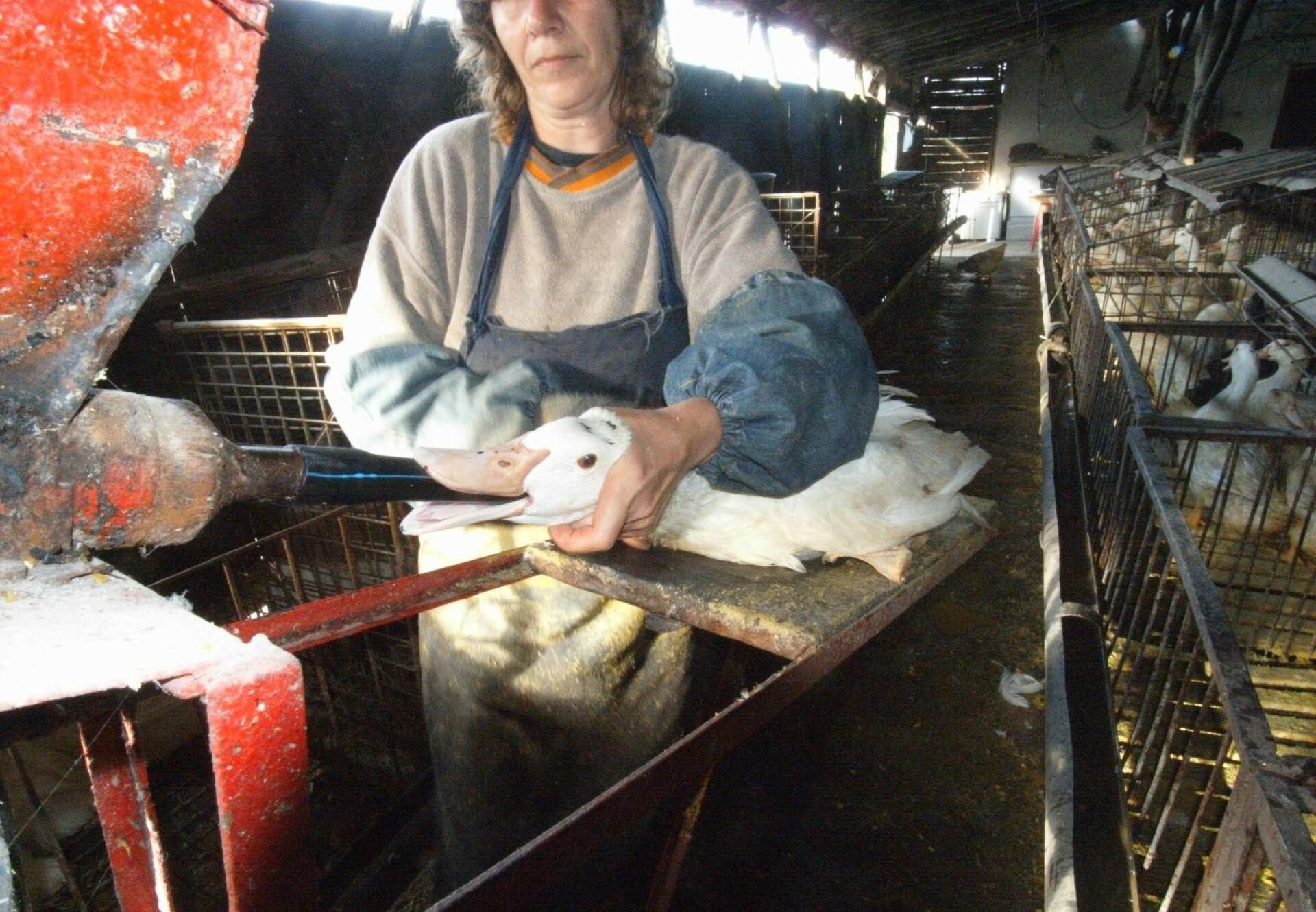
Foie Gras
The dark side of a delicacy
The pricey delicacy foie gras has a dark and haunting truth behind its production, based on incredible cruelty to animals. Through force-feeding, ducks and geese are intentionally tortured and made successively ill in order to produce this 'luxury product'. A long pipe is rammed into the oesophagus two or three times a day (varying in species). A mixture of corn mash boiled in fat is administered through this pipe, intended to cause rapid weight gain. The liver is unable to properly process these large amounts of fat, resulting in abnormal storing of fat. Due to this pathologic degeneration, the animal’s liver can grow up to 10 times its normal size.1
What force-feeding means for ducks and geese
Through force-feeding, the fat content of the liver increases to over 50 percent. By the end of their lives, the animals can hardly move independently because of their corpulent bodies: their thin legs are often unable to support the weight and snap.
In addition, the brutal procedure of force-feeding through a long pipe leads to grave damage to the oesophagus. This is most clearly seen when the animals are left heavily panting after the feed has been administered.2
Five Facts About Force-Feeding
What You Can Do to Stop Force-Feeding
- Take care when purchasing duck and goose meat from France, Spain, Bulgaria and Hungary, since these countries export foie gras.
- Look out for duck and geese meat without 'giblets'! If the liver is missing, it is hard to prove that the animal was not force-fed.
- Check the EC identification mark (the oval-shaped EU code) on the product.
- Caution when buying goose liver pates, terrines and similar products made from duck liver. Even products originating in countries where force-feeding is prohibited can contain foie gras or meat from force-fed poultry.
- Look twice when shopping on your farmers' market! Not all the ducks and geese on offer come from farms that do not force feed. Even fresh, unwrapped poultry may have been force-fed. Ask for details of the origin and if in doubt, do not purchase the meat.
- Think about the fact that conventional duck and goose farming also contravenes animal welfare. How about vegetarian or vegan alternatives this Christmas, or at least organic meat? Take a look at our delicious animal-friendly recipes here.
Source
2. Broom M, Rochlitz I. The welfare of ducks during Foie Gras production. University of Cambridge; 2015. https://www.researchgate.net/publication/316871174_The_welfare_of_ducks_during_foie_gras_production
3. foie-gras-scientific-report.pdf. [accessed 2023 Sep 26]. https://spca.bc.ca/wp-content/uploads/foie-gras-scientific-report.pdf
4. Concetto AD, Morice O, Corion M, Santos S. Chick and Duckling Killing: Achieving an EU-Wide Prohibition.
 Please be careful! If you delete this page, consider that it could be used within an other language version.
Please be careful! If you delete this page, consider that it could be used within an other language version.




